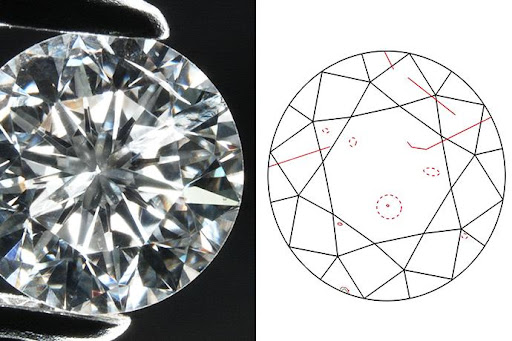
Included crystals, structural irregularities, and other characteristics of diamonds that can be seen under 10X magnification are caused by the diamond's formation process and can be observed under 10X magnification. These inclusions or clarity characteristics can assist in identifying a diamond as natural and can provide valuable information to scientists about the Earth. However, the majority of consumers prefer their diamonds to be as clear as possible. As a result, the Gemological Institute of America developed a diamond clarity grading scale that ranges from Flawless and Internally Flawless all the way down to Included clarity. Even Flawless diamonds, on the other hand, may not be completely flawless. Flawless simply refers to the absence of inclusions and blemishes when viewed under a 10x magnification.
The majority of diamonds, even those with VS2 or SI1 clarity, do not have inclusions that are easily visible to the naked eye. The inclusions within a SI2 or I (Included) clarity diamond, on the other hand, will be more visible to the unaided eye than those within a SI1 clarity diamond. Of course, this is also dependent on the individual's point of view on the matter! However, in general, budget-conscious consumers can save money by purchasing a comparable diamond in the VS or SI range; it will most likely appear similar to a diamond with a higher clarity grade when viewed with the naked eye. Although if you or the recipient is a perfectionist, you may want to consider clarity grades of VVS2 and higher, keep in mind that you will have to pay a premium for these grades.
In a diamond with excellent clarity, look for the following characteristics:
Sell your diamonds with ease with Diamond Registry’s comprehensive approach and vast global industry connections to help you find the best buyer for your diamond fast. Visit www.diamondregistry.com/sell-your-ring to take your first step to fast, easy and reliable way of selling your diamond.
Want to check and calculate diamond per carat instantly? Go to DR’s diamond price calculator www.diamondregistry.com/diamond-price-list/#calc-move-to to know how. Reliable and trusted carat calculator in the diamond industry since!

